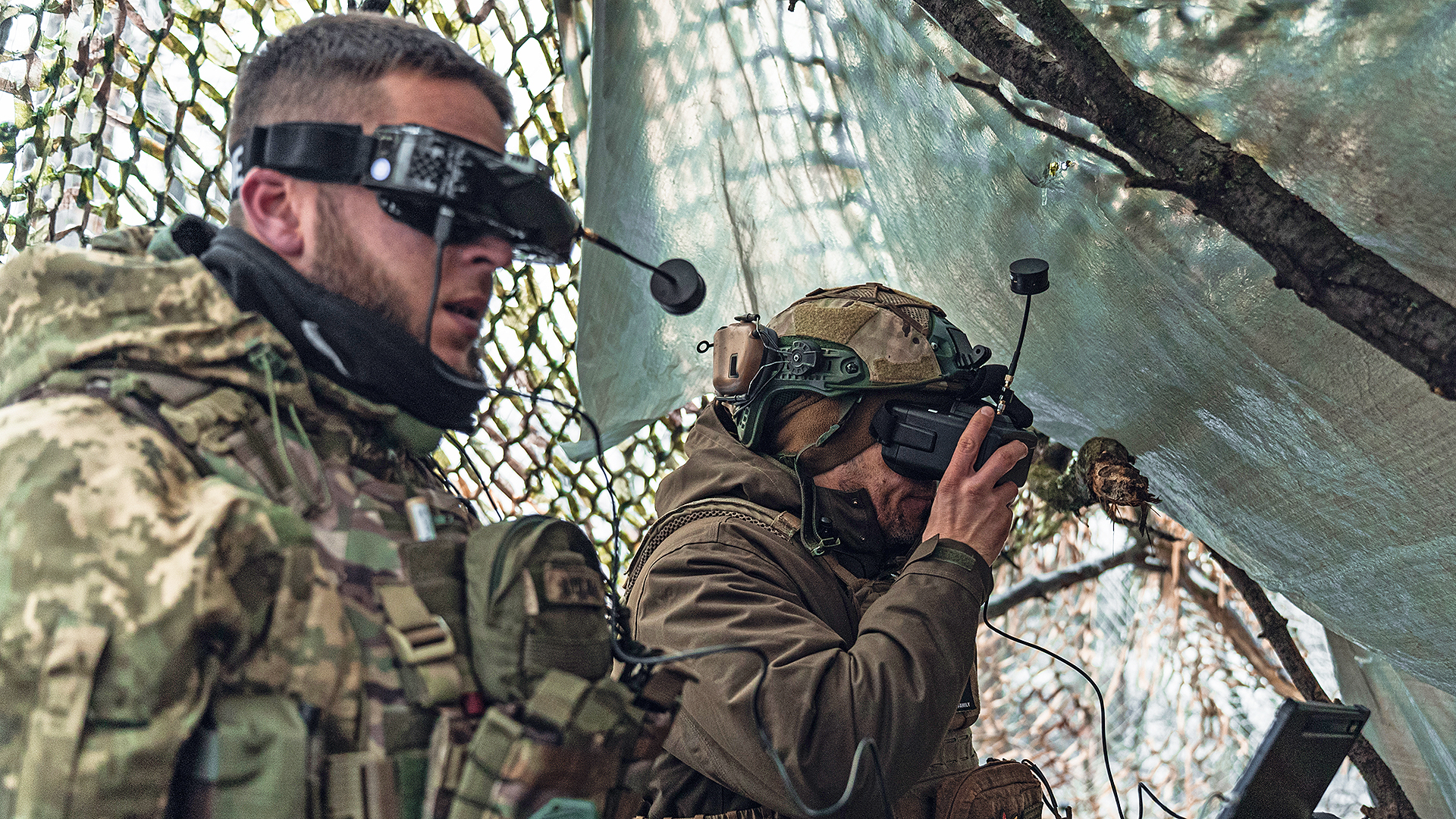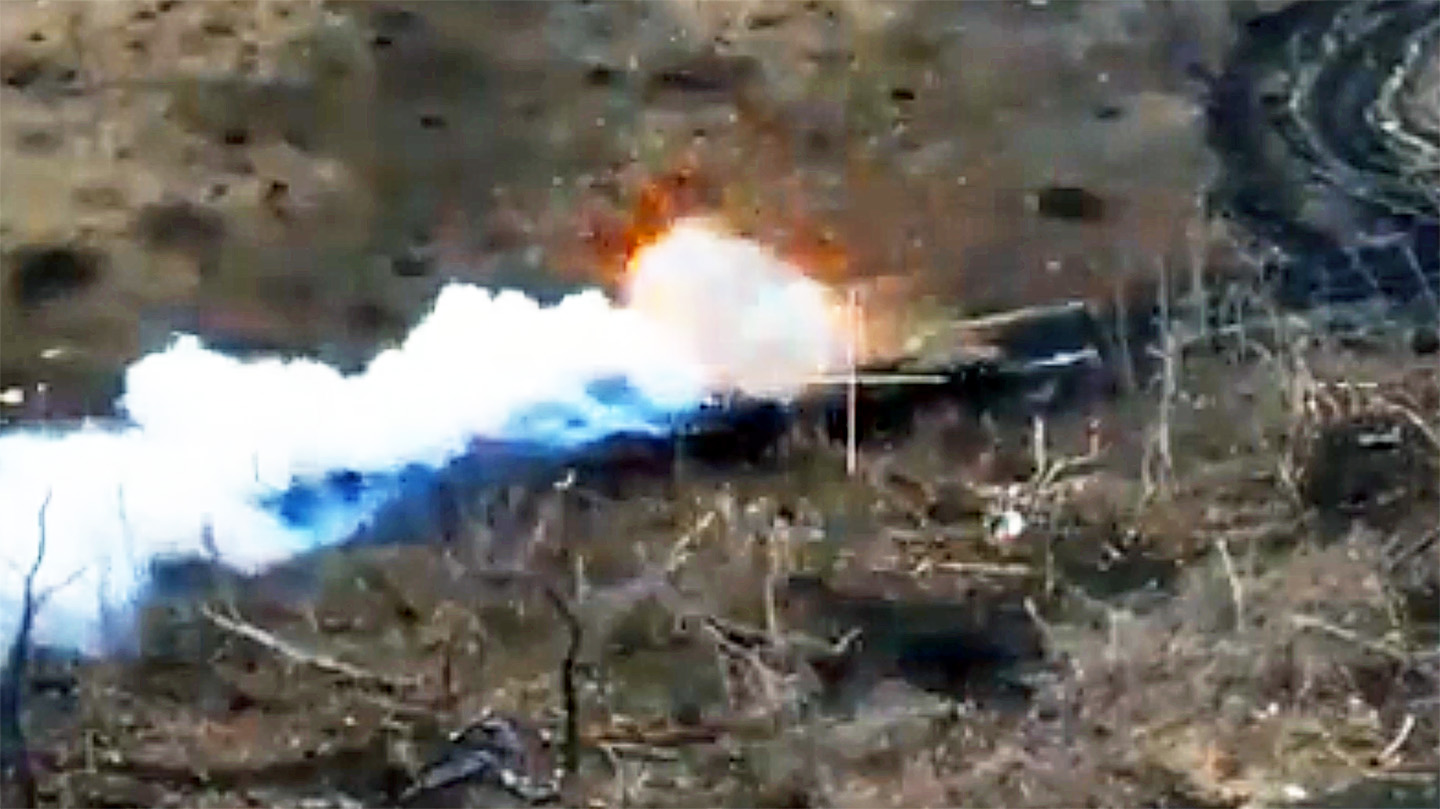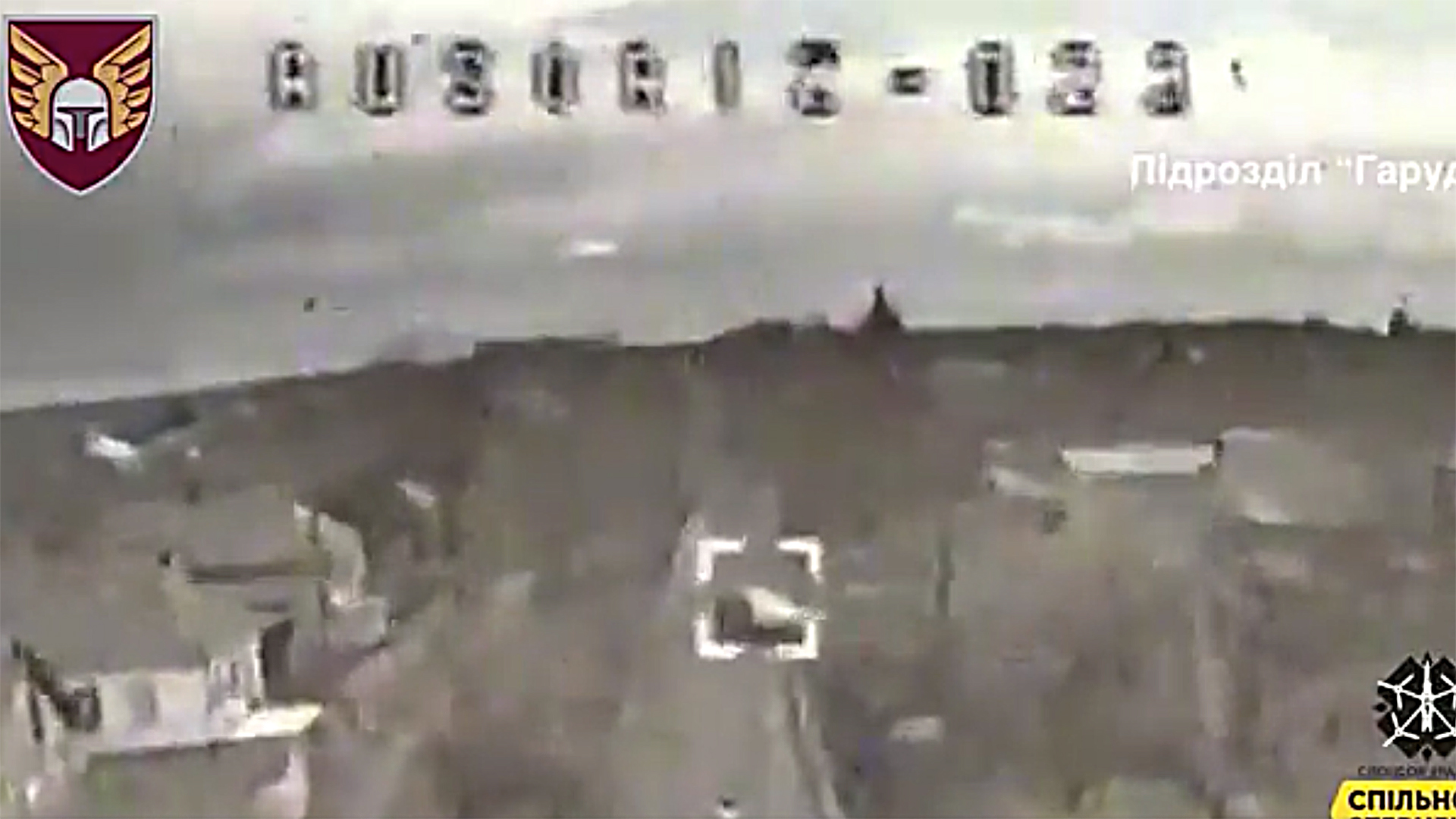While details at this point are still scarce, we may have had a glimpse of Ukrainian-made drones successfully attacking a Russian target on the battlefield aided by automated targeting technology. While this kind of capability still appears limited, the conflict is seeing rapid progress in this area, as we outlined in our previous deep dive into the coming AI revolution for low-end drone warfare. Further moves toward autonomous drones are well underway by both sides.
A video posted recently to social media purports to show a Ukrainian first-person view (FPV) drone engaging a Russian tank without the operator being in the loop during the last moments of its flight. The tank is on the edge of a tree line in the daytime but the distance between the tank and the drone that’s filming the engagement means it’s not possible to see details of the attacking drone, which appears to strike the turret, triggering a secondary explosion.
The date and location of the incident have not been disclosed but it is claimed to have been part of a joint operation by Ukraine’s 60th and 63rd Mechanized Brigades. Each of these units includes its own company, or companies specializing in FPV drone operations.
The Ukrainian activist Serhii Sternenko, a controversial figure in his own right, but a prolific video blogger on events in the conflict, provided his own claims about the engagement:
“Our drones have evolved and are now able to hit targets almost independently!” Sternenko declared on X. “The drone flew to the target in the conditions of active suppression by electronic warfare systems, but this did not prevent it. Because at the final stage, it did its job on its own.”
Russian jamming, of drone and datalinks and navigation systems, in particular, has been a problem for Ukraine and its efficiency can be seen in the increasing efforts by the Ukrainians to use the same kinds of tactics against Russia.
Sternenko notes that the technology involved is “new and needs to be improved and scaled up,” before requesting donations to fund “1,300+ such drones and invest in the technology itself” to ensure that the “product is fully ready.”
“They neutralize the work of enemy electronic warfare in most cases and allow us to beat the enemy even more effectively,” Sternenko says, before adding that there are plans to include the same technology in both FPV quadcopters and aircraft-like drones and for day and night operations.
The drone seen in the video is not named, but the same source claims that, while this is not the first such solution in Ukraine, “it is one of the first successful applications.”
Sternenko subsequently posted another video that he claimed shows an “automated” FPV drone in action, this time used by the 46th Airmobile Brigade to target an enemy car parked alongside a road in a town or village.
In both cases, the claims seem a bit overblown.
What we are seeing in each case is the use of autopilot to maintain the drone’s course toward its target after the command link with its operator is degraded or broken during the terminal phase of an attack. This could also include a form of automated terminal guidance, actually automonously guiding onto an object that is locked onto by the controller, greatly improving its ability to complete its attack, but it’s not clear if this level of sophistication is even present here.
This would help mitigate the effects of highly localized jamming, in particular electronic warfare systems on the targeted vehicles themselves that are becoming highly prevalent. But this capability would be just as important in addressing line-of-sight communications issues with these types of drones as they fly very close to the ground during their attack runs.
Using short-range FPV drones, a human operator has to manually fly (or at least guide) the weapon in real time and choose its target, and then manually fly into it. For the engagement to be successful, this guidance principle relies on a continuous line-of-sight datalink between the drone and its controller. The effects of localized jamming or the drone flying at a lower level amongst ground clutter and terrain can severely degrade or outright breaking that link. The farther the drones travel from their controlling party, the line-of-sight issues can become more pronounced. We often see the feeds of FPV drones becoming patchy or cutting out entirely just before they impact their targets. Once again, you can read all about these operational limitations and how AI and automation can get around them in our special feature linked here.

Clearly, this is a very severe limitation on these drones’ potential on the battlefield and automation for the final moments of their mission, during their terminal attack run, could be a partial solution, and one that’s very achievable.
Using an autopilot to bring the drone to its last known flight vector would require only a very limited form of automation and could be somewhat effective for the kinds of static targets we see in both these videos. One where the drone locks onto a target and then flies its final attack run autonomously would be far more capable and could potentially hit moving targets.
A similar machine learning-aided feature is found in the U.S.-made Switchblade loitering munition, a weapon that has also been used by Ukraine in the war with Russia.
As the Switchblade attacks its target a special autopilot takes over to complete its terminal run. This allows for the engagement of targets more reliably and for the weapon to hit moving ones with greater accuracy even in denser terrain where line-of-sight is not assured. You can read more about how the system works in this previous feature of ours.
We know that Russia and Ukraine have been looking at bringing increased autonomy to their drones and Sternenko notes that the Kremlin’s forces “have been testing a similar technology for more than a month.”
Regardless of the drivers behind Ukraine’s apparent use of drones incorporating at least some level of automation, it points also to a broader weakness in conventional FPVs, namely the fact that these, as well as the loitering munitions and bomblet-dropping drones that are aimed at moving targets or targets of opportunity, rely on ‘man-in-the-loop’ control.

Ultimately, giving ability for the drone to fly itself to the target for the last moments of its mission is a relatively basic kind of automation to add to an FPV drone, but one that could bring significant advantages on the battlefield.

Nevertheless, a growing weight of evidence does point to AI-enabled drones — both short-range and long-range ones — becoming a factor in the war in Ukraine sooner rather than later. As well as the undoubted problems posed by electronic warfare, for both sides, the possibility of fielding drones that can find their targets independent of human operators is a hugely attractive one.

In the future — very possibly in the near future — we may well start to see fully autonomous drones attacking targets of their own choosing on the battlefield in Ukraine without the option of human intervention. For now, however, it appears that Ukraine may be using a simpler level of automation to overcome some of the inherent disadvantages encountered with FPV drones and their line-of-sight control principles.
Contact the author: thomas@thewarzone.com
